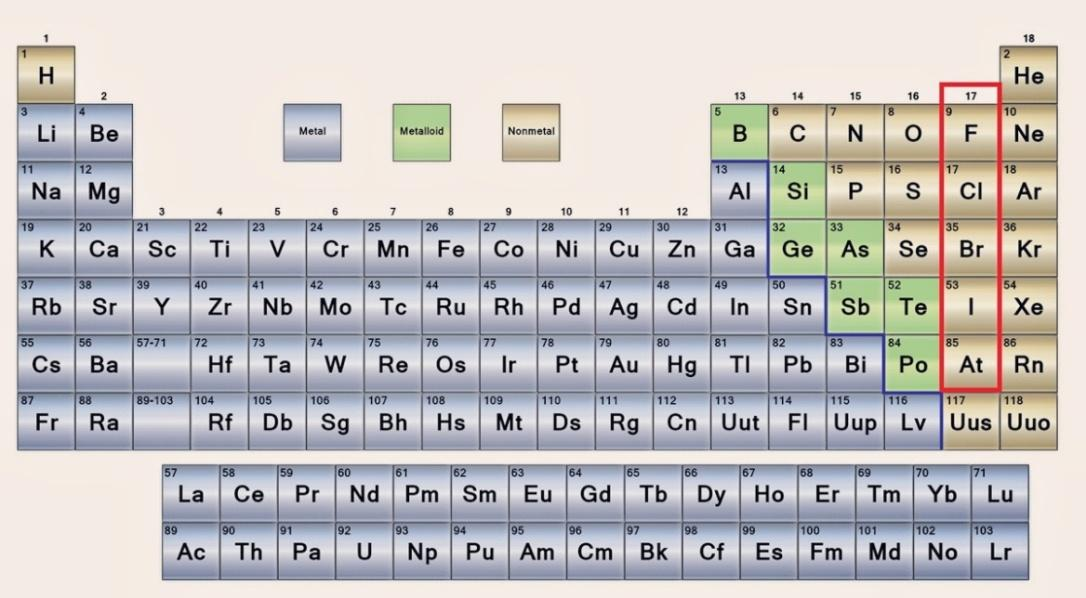
What type of element is most abundant: metals, non – metals or metalloids?
Answer
515.4k+ views
Hint: There are three types of elements that can be grouped in the periodic table, metals that are found at the left most of the table, non – metals that are at the right, and metalloids that are in the middle and possess the properties of both metals and non – metals. The most abundant will be those which are found the most in nature.
Complete answer:
We have been asked which types of elements are most abundant. The most abundant means that the type in which most of the elements will be found. There are 3 types, metals, non – metals, and metalloids in the periodic table.
Metals are those elements that are situated in the most left side, those are alkali and alkaline earth metals, like, sodium, magnesium. While in the center of the periodic table are the transition metals like, iron, titanium, etc.
Non – metals are the elements that are at the right most of the periodic table. Elements like oxygen, nitrogen, chlorine, come under non – metals.
In between metals, and non – metals we can see a distinct line on the periodic table that separates metalloids. Metalloids are elements that have properties similar to metals and non – metals. Silicon, germanium, gallium are some metalloids.
The periodic table is as follows:

The clear abundance of metals is shown, as metals consist of alkali, alkaline and transition metals. A zig zag line shows metalloids.
Hence, the most abundant type of elements are found in metals.
Note:
The most abundant or different types of elements are found in metals. While the most abundant elements in the universe are hydrogen and helium, that makes the stars. On the other hand, the most abundant element on the Earth is oxygen, which is a non – metal. It is present in the form of various oxides and in the air.
Complete answer:
We have been asked which types of elements are most abundant. The most abundant means that the type in which most of the elements will be found. There are 3 types, metals, non – metals, and metalloids in the periodic table.
Metals are those elements that are situated in the most left side, those are alkali and alkaline earth metals, like, sodium, magnesium. While in the center of the periodic table are the transition metals like, iron, titanium, etc.
Non – metals are the elements that are at the right most of the periodic table. Elements like oxygen, nitrogen, chlorine, come under non – metals.
In between metals, and non – metals we can see a distinct line on the periodic table that separates metalloids. Metalloids are elements that have properties similar to metals and non – metals. Silicon, germanium, gallium are some metalloids.
The periodic table is as follows:

The clear abundance of metals is shown, as metals consist of alkali, alkaline and transition metals. A zig zag line shows metalloids.
Hence, the most abundant type of elements are found in metals.
Note:
The most abundant or different types of elements are found in metals. While the most abundant elements in the universe are hydrogen and helium, that makes the stars. On the other hand, the most abundant element on the Earth is oxygen, which is a non – metal. It is present in the form of various oxides and in the air.
Recently Updated Pages
Master Class 10 General Knowledge: Engaging Questions & Answers for Success

Master Class 10 Computer Science: Engaging Questions & Answers for Success

Master Class 10 English: Engaging Questions & Answers for Success

Master Class 10 Social Science: Engaging Questions & Answers for Success

Master Class 10 Maths: Engaging Questions & Answers for Success

Master Class 10 Science: Engaging Questions & Answers for Success

Trending doubts
The shortest day of the year in India

Why is there a time difference of about 5 hours between class 10 social science CBSE

Write a letter to the principal requesting him to grant class 10 english CBSE

What is the median of the first 10 natural numbers class 10 maths CBSE

The Equation xxx + 2 is Satisfied when x is Equal to Class 10 Maths

State and prove converse of BPT Basic Proportionality class 10 maths CBSE




